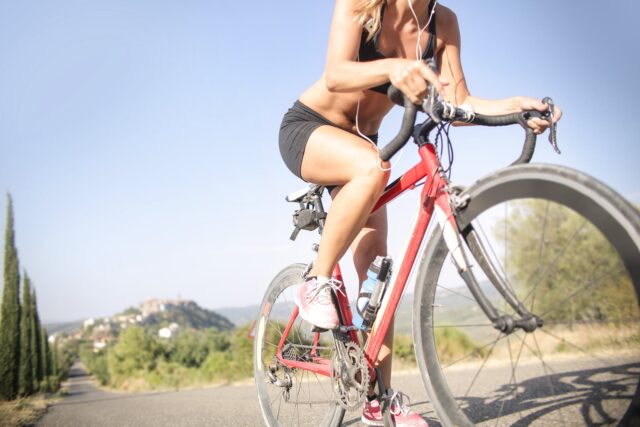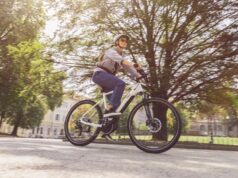There are a lot of different bikes out there, and each have their own pros and cons. While picking a specific bike, you should think about what you are going to use it for. Do you want to cycle around the city? Do you want to commute? Do you need a bike that can carry multiple people? Do you want to climb hills? Do you want to go fast? What type of cyclist are you?
As the average person’s life expectancy continues to rise, public and private transportation options have expanded in the past decade. More people are using bikes as a primary mode of transportation, and several innovative companies have introduced new bikes that make cycling more comfortable. However, there are also several types of bikes that have been around for years but have yet to become mainstream.
In 2023, the bicycle market is expected to be worth around $100 billion. In the US alone, around 25.5 million people use a bike every day. That’s a lot of people. Why not buy one? There are a lot of different bikes on the market right now, from low-cost folding bikes to high-end carbon road-racers.
Choosing the perfect bike for your requirements may be difficult. The bicycle is the ideal instrument for commuting, staying in shape, or just exploring the countryside. However, there are a bewilderingly large – and increasing – number of various kinds of bikes from which to select.
So, if you’re wondering, “What kind of bike should I buy?” keep reading as we walk you through the many bike types available today to help you choose the ideal one for your requirements.
To get us started, here’s a rundown of our particular bike-buying recommendations for a variety of popular models:
If none of that made sense to you, continue reading for additional information.
It’s crucial to consider what you want to accomplish with your bike and where you want to go since the ideal bike for you is entirely dependent on this.
Your bike of choice will also be determined by your own preferences, as well as the distance and terrain you want to ride. There are many kinds of cycling and bicycles available to help you accomplish your objectives.
There’s a bike out there for everyone, whether you’re an urban commuter, a lightning-quick road racer, a trail center hero, a downhiller, a fixed-wheel enthusiast, a gravel path explorer, or something else.
Road bikes are the best for getting about quickly on asphalt.
Riding on smooth, asphalted roads is ideal for road bikes. Smith, Robert
Road bikes, as the name implies, are designed to be driven on paved roads as quickly as possible. Lightweight frames and thin tyres are intended to let you attain maximum speed with the least amount of effort.
They feature dropped handlebars (those that loop down and backwards) that enable you to get into a more efficient and aerodynamic riding posture, as well as gearing designed for maximum speed.
They’ll allow you go on big-mile rides with friends under the pretense of somewhat more relaxed’endurance’ bikes, but they’ll also lend themselves nicely to commuting due to their capacity to cover territory fast.
However, some riders may find the speed-oriented riding posture unpleasant, and the lightweight wheels and tyres are vulnerable to damage from kerbs and potholes.
Many specialized road bikes, particularly those at the racier end of the spectrum, lack the capacity to carry baggage, so if you need to transport a large load, a pure-bred road bike may not be the best option.
Pros: It’s quick, efficient, and enjoyable.
Cons: More easily damaged and less comfortable for casual riders.
Buyer’s guides for road bikes, organized by price.
Mountain bikes are the finest choice for difficult terrain.
Off-road riding is best done on mountain bikes. Phil Hall is a well-known figure in the
Mountain bikes are constructed robust with aggressive knobbly tyres intended to find traction on virtually any surface and are meant to take on the most difficult off-road terrain that nature has to offer.
They also feature strong brakes in the center of the wheels, with automobile or motorcycle-style discs, and more costly machines will have suspension on both ends for improved control over difficult terrain. The gearing is intended to bring you up and down hilly terrain with a broad variety of gears to handle the different slopes.
Mountain bikes, with their more comfortable riding posture, may be an excellent option for general leisure riding even if you don’t intend to conquer mountain ranges.
Suspension is excellent for true off-road riding, but it adds weight, costs more, and may be wasteful if you intend to spend the majority of your time on the road.
Check out our buyer’s guide to the finest mountain bikes if you want to go into the unknown, test your boundaries, and take the road less traveled.
Pros: Excellent braking, upright posture, toughness, and versatility
Cons: On tarmac, it’s heavy and sluggish.
Hybrid bikes are ideal for casual cyclists who just have a short commute.
Due to their flexibility, hybrid bikes are a popular option among bike commuters. Immediate Media / Oliver Woodman
A hybrid bike is best described as a cross between a road bike and a mountain bike, with the comfortable riding posture of a mountain bike combined with a lighter frame and fast-rolling wheels like those seen on a road cycle.
They’re ideal if you need to travel a long distance on the road but don’t want to squirm into an unpleasant riding posture. While sitting in a more upright posture is less aerodynamically effective, it enables you to see farther ahead, which is a significant benefit in congested city traffic.
This is the way to go if you want to ride fast on excellent roads but prefer a more upright posture or don’t like drop handlebars. The one significant disadvantage of a flat-bar bike, as previously stated, is that you are not as aerodynamic as you would be on a racing bike, and therefore you are not as fast.
More powerful disc brakes are often used on hybrid bikes, which provide more consistent performance in wet conditions at a small weight penalty. They also come with a variety of mounts for carrying additional baggage, such as specialized pannier bags.
Our guide to the finest hybrid bikes will tell you all you need to know about bridging the gap between urban performance and confident handling.
Pros: Relatively fast, adaptable, and upright
Cons: They are often heavier and slower than road bikes.
Touring bikes are ideal for carrying baggage and traveling long distances.
Touring bikes are designed for taking the back roads, but they also make great commuting cycles on congested city streets. Burton, Russell
While a hybrid bike is ideal for city riding, a touring bike can handle everything from a commute to a continent-crossing expedition.
They typically feature the same fast-rolling 700c wheels as road and hybrid cycles, but with wider tyres that enable you to comfortably tackle a variety of terrain.
Some ‘hardcore’ touring bikes built for super-heavy loads may utilize 26in wheels since replacements are frequently easier to get by in remote areas.
A touring bike’s more comfortable riding posture and stable design allow you to tackle virtually anything, whether it’s a mountain pass laden with groceries or a short commute to work.
If you’re looking for a very flexible all-rounder, check out our guide to the finest touring bikes, whether you’re traveling to familiar locations or venturing off the beaten path.
Pros: It’s tough, has a lot of load-carrying capability, yet it’s still fast.
Cons: Not nearly as fast as a racing bike.
Gravel/adventure/all-road/bikepacking bikes are ideal if you need to go there quickly on poor roads.
Gravel bikes are becoming more and more popular, and for good reason. Cannondale
Gravel bikes, also known as adventure bikes, all-road bikes, or bikepacking bikes, are becoming more popular and stylish, and it’s not hard to understand why.
Gravel bikes combine road bike aesthetics and speed with enough of frame space for mounting thick, knobbly tyres that may be up to 35mm wide to carry you over virtually any terrain, including crappy asphalt, gloopy mud, bridleways, gravel pathways, and more.
Adventure bikes are available in steel, aluminum, carbon, and titanium, with costs ranging from cheap to aspirational. Many will have eyelets for mounting mudguards and pannier racks, disc brakes (hydraulic if you’re fortunate), and a more relaxed geometry than a road bike to improve handling on a variety of terrain.
They’re also a fantastic choice for winter road riding; just add some puncture-resistant tyres and you’re ready to go.
Bikepacking, which is basically touring but with a better fashion sense and hashtags, is done on adventure cycles that can carry baggage (usually frame bags, saddle bags, and bar bags).
Do you want to ride a dirt bike? Our selection of the finest dirt bikes will assist you in locating the ideal model for your requirements.
Pros: It’s quick, comfy, and useful.
Cons: Can be a little heavy at times, and thieves like it.
Bikes for cyclocross
Cyclocross bikes are built for rapid off-road riding. Smith, Robert
Cyclocross bikes are comparable to the bikes mentioned above in principle, but they are built for the cyclocross racing discipline.
This implies that, although they’ll have big tyres, drop handlebars, and disc brakes in many instances, they won’t have mudguard or pannier mounts.
Their geometry is generally more severe than that of dirt and adventure bikes, which makes them less appealing for extended rides.
All of the top-scoring cyclocross bikes from recent testing are included in our list of the finest cyclocross bikes.
Pros: For racers, it’s a quick and devoted option.
Lows: Not as adaptable as gravel/adventure bikes.
If you want a basic bike, a fixed gear or singlespeed bike is the ideal option.
Fixies, or fixed gear bikes, are a low-maintenance alternative. Immediate Media / Jack Luke
The fixie (or ‘fixed wheel,’ if you’re being traditional) is the ultimate in simplicity, and it’s the only choice if you’re riding on a velodrome.
Because a genuine fixie has no freewheel, you must constantly pedal to keep going. Once you get accustomed to it, it gives you a unique sense of connection and control, but fixies aren’t for the faint of heart.
In the hands of a skilled rider, they’re lightning quick, and their simplicity means they’re low-maintenance. They’re excellent for confident commuters who don’t mind suffering since they live in a mountainous area and want complete control at all times, but they’re not for the casual rider.
Once you’ve mastered the art of riding a fixie, they’re among the finest commuting bikes. This is why they’re so popular with bike couriers, who appreciate their dependability — a legal-minimum fixie with just a front brake has virtually nothing to go wrong with.
Do you want to learn more? We’ve put up a comprehensive buyer’s guide for fixie and singlespeed bikes.
Pros: It’s light, simple, and fast.
Cons: Some expertise is needed, and it is difficult when the terrain is hilly.
City bike: the most convenient mode of transportation.
City bikes in the traditional Dutch design in their natural environment. Contributor Getty Images Kaveh Kazemi
In flat cities, a Dutch-style city or town bike (or a’sit-up-and-beg’) provides excellent short-range mobility. The simplicity, practicality, and toughness of this type of bike appeal to many people.
When you just have one gear, there’s not much that can go wrong, and hub gear variants with up to 11 gears are still quite robust.
Chainguards and flat pedals are standard on city bikes, so you can ride in your everyday clothing. You won’t need many accessories since self-powered dynamo lights and a lock are frequently included.
Potholes aren’t a problem, and the upright riding posture offers you a commanding perspective of the road. The major disadvantage is that they are sometimes very heavy, and although the riding posture is pleasant, it is inefficient, so you won’t want to tackle any steep slopes.
Pros: Great aesthetics, comfortable riding posture, practical, suitable for wearing regular clothing, and often long-lasting.
Cons: The game is heavy and sluggish.
If you need a helping hand up the hills, an electric bike is the way to go.
Some electric bikes, like this Raleigh Motus with its big visible battery at the frame’s down tube, are blatantly propelled by a motor. Immediate Media / Russell Burton
Electric bikes or ebikes, which are powered by a strong motor, are ideal for commuters who want to arrive at work in a less sweaty condition or who are unsure of their fitness.
Laws differ from nation to country, and even state to state in the United States. Electric bikes restricted to 15.5mph / 25km/h may be used on the road in the UK (excluding Northern Ireland) without a helmet or license – they are bikes in the eyes of the law since you still have to pedal to activate the electric assistance (thus the name “pedelec”).
The motors and batteries on bikes like this Specialized Turbo Vado SL may be hidden extremely well. Immediate Media / Oliver Woodman
More powerful ebikes (some with motorcycle-style throttles) are also available, however these are classified as mopeds or motorcycles in certain countries, including the UK, and must follow the same regulations (insurance, helmets and so forth).
Due to flat bars, mudguards, and baggage capacity, most ebikes are intended to be comfortable and simple to live with. For the battery, motor, and control electronics, there is often a considerable price and weight premium over a comparable conventional bike. However, as technology advances, both costs and weights are decreasing; some versions almost resemble unassisted bicycles.
In the slopes, electric mountain bikes can be a lot of fun. Burton, Russell
The world of electric mountain bikes, or eMTBs, is also quickly growing, enabling riders who would otherwise have had to give up dirt riding to continue enjoying the countryside for longer than they could have anticipated.
Electric road bikes with drop handlebars are becoming more popular, although they are still a niche market.
Our thorough list of the finest electric bikes will help you choose the electric bike that is perfect for you.
Pros: Simple to ride, comfy, and enjoyable
Cons: Recharging is required on a regular basis, and the bike is considerably heavier and more costly than a comparable conventional cycle.
Folding bikes are the ideal option if you don’t have a lot of room and want to use public transportation.
Folding bikes are a great option for people with limited space at home or at work. Matthew Lloyd is a writer who lives in the United
There’s nothing better than a foldable bike if you need to mix some riding with city mobility. They’re excellent for short trips – particularly when storage space is limited on both ends – and their mobility makes them ideal for when you need to catch a train or a bus to go where you need to go.
As a result, foldable bikes are very popular among commuters in large cities. The smallest ones will fit beneath your desk and are simple to transport.
Because of the required sacrifices, a folder will not ride like a traditional bike, yet the finest contemporary folders are surprisingly competent.
Our list of the best foldable bikes will immediately point you in the direction of the folding bikes that are worth purchasing.
Pros: Extremely easy to store, may be carried on public transportation, and tiny wheels speed quickly.
Cons: Not as stable or pothole-proof as a big-wheeled bike, and heavier and slower.
Bikes for kids are the greatest for… youngsters!
Kids’ bikes come in a variety of designs and sizes to accommodate riders of all ages and abilities. Black Mountain is a mountain in the United States.
The first thing to remember is that children’s requirements differ dramatically based on their age and aptitude.
For the pre-school set, balance bikes are the way to go, and by the time they graduate to 16-inch wheels, they’ll (ideally) be pedaling away without stabilisers in no time.
When they move up to 20-inch wheels, gears begin to emerge, and by the time they’re nine and riding 24-inch wheels, they’ll be riding miniature versions of adult bikes, complete with disc brakes and suspension.
Here is our selection of the finest children’s bicycles.
Frequently Asked Questions
What type of bike is most versatile?
A mountain bike is most versatile because it can handle a variety of terrains.
What is the most popular type of bicycle?
The most popular type of bicycle is the mountain bike.
What type of bike is the easiest to ride?
The easiest bike to ride is a mountain bike.
Related Tags
This article broadly covered the following related topics:
- best type of bike to buy
- best type of bike for street riding
- best bike: what type of bike should i buy in 2023 quiz
- best bike: what type of bike should i buy in 2023 list
- best bike: what type of bike should i buy in 2023 calendar







